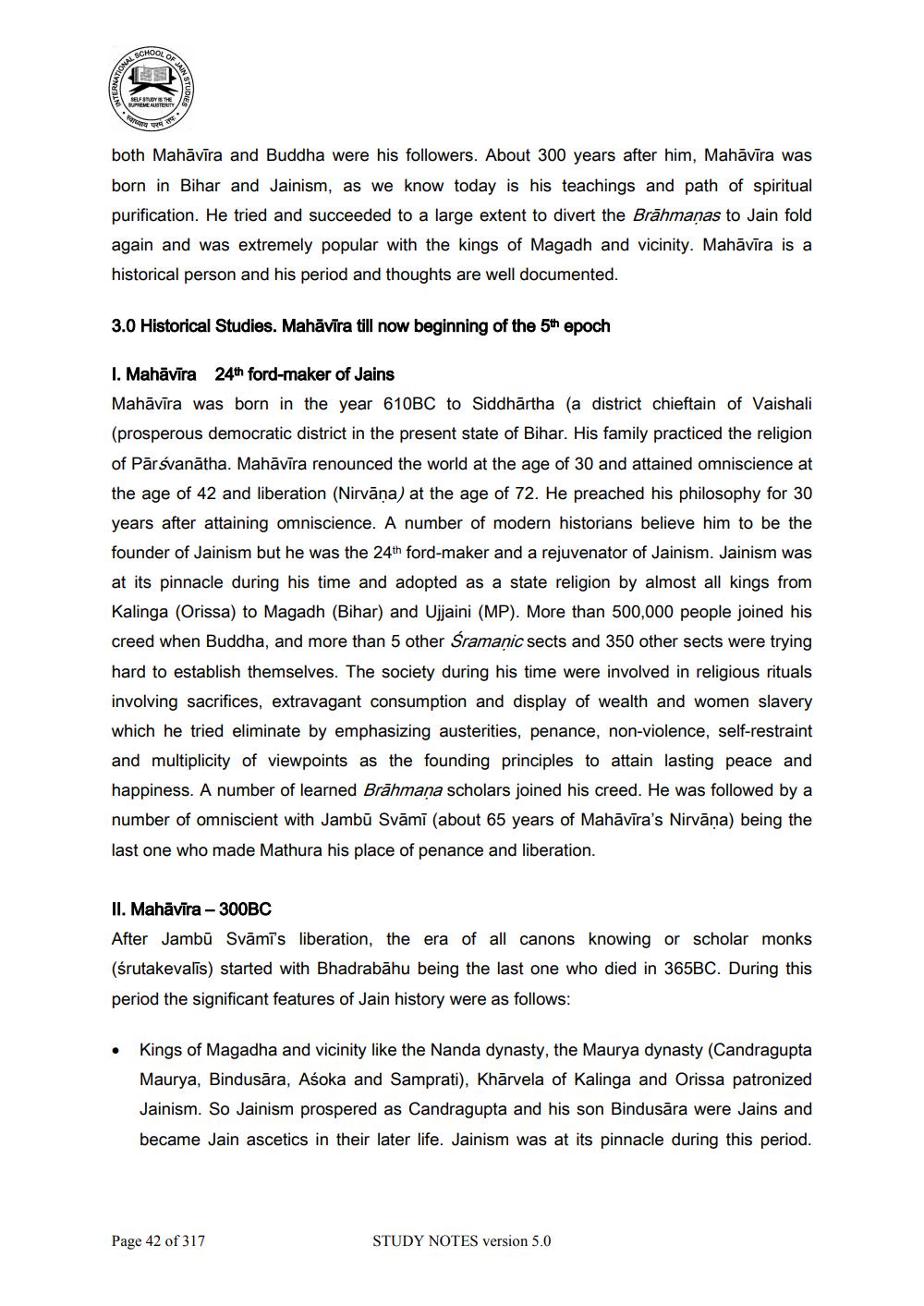________________
SCHOOL
TIONAL
OF
SELF STUDY IS THE SUPREME AUSTERITY,
स्वाध्याय परम त
STUDIES
both Mahāvīra and Buddha were his followers. About 300 years after him, Mahāvīra was born in Bihar and Jainism, as we know today is his teachings and path of spiritual purification. He tried and succeeded to a large extent to divert the Brahmanas to Jain fold again and was extremely popular with the kings of Magadh and vicinity. Mahāvīra is a historical person and his period and thoughts are well documented.
3.0 Historical Studies. Mahāvīra till now beginning of the 5th epoch
I. Mahāvīra 24th ford-maker of Jains
Mahāvīra was born in the year 610BC to Siddhartha (a district chieftain of Vaishali (prosperous democratic district in the present state of Bihar. His family practiced the religion of Pārsvanatha. Mahāvīra renounced the world at the age of 30 and attained omniscience at the age of 42 and liberation (Nirvāṇa) at the age of 72. He preached his philosophy for 30 years after attaining omniscience. A number of modern historians believe him to be the founder of Jainism but he was the 24th ford-maker and a rejuvenator of Jainism. Jainism was at its pinnacle during his time and adopted as a state religion by almost all kings from Kalinga (Orissa) to Magadh (Bihar) and Ujjaini (MP). More than 500,000 people joined his creed when Buddha, and more than 5 other Śramanic sects and 350 other sects were trying hard to establish themselves. The society during his time were involved in religious rituals involving sacrifices, extravagant consumption and display of wealth and women slavery which he tried eliminate by emphasizing austerities, penance, non-violence, self-restraint and multiplicity of viewpoints as the founding principles to attain lasting peace and happiness. A number of learned Brāhmaṇa scholars joined his creed. He was followed by a number of omniscient with Jambu Svāmī (about 65 years of Mahāvīra's Nirvāna) being the last one who made Mathura his place of penance and liberation.
II. Mahāvīra - 300BC
After Jambū Svāmi's liberation, the era of all canons knowing or scholar monks (śrutakevalis) started with Bhadrabahu being the last one who died in 365BC. During this period the significant features of Jain history were as follows:
Kings of Magadha and vicinity like the Nanda dynasty, the Maurya dynasty (Candragupta Maurya, Bindusara, Aśoka and Samprati), Khārvela of Kalinga and Orissa patronized Jainism. So Jainism prospered as Candragupta and his son Bindusăra were Jains and became Jain ascetics in their later life. Jainism was at its pinnacle during this period.
Page 42 of 317
STUDY NOTES version 5.0




